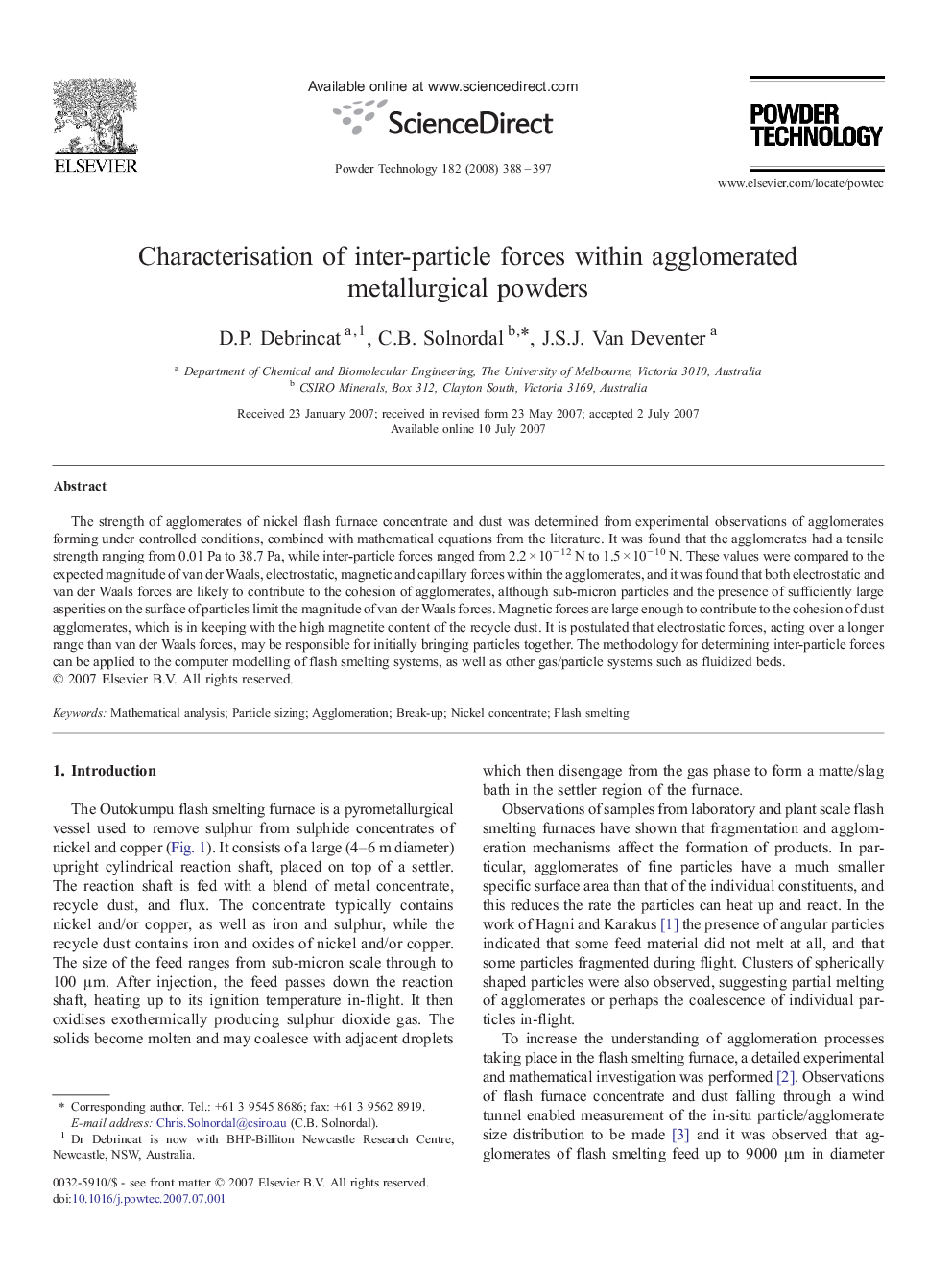| Article ID | Journal | Published Year | Pages | File Type |
|---|---|---|---|---|
| 239004 | Powder Technology | 2008 | 10 Pages |
The strength of agglomerates of nickel flash furnace concentrate and dust was determined from experimental observations of agglomerates forming under controlled conditions, combined with mathematical equations from the literature. It was found that the agglomerates had a tensile strength ranging from 0.01 Pa to 38.7 Pa, while inter-particle forces ranged from 2.2 × 10− 12 N to 1.5 × 10− 10 N. These values were compared to the expected magnitude of van der Waals, electrostatic, magnetic and capillary forces within the agglomerates, and it was found that both electrostatic and van der Waals forces are likely to contribute to the cohesion of agglomerates, although sub-micron particles and the presence of sufficiently large asperities on the surface of particles limit the magnitude of van der Waals forces. Magnetic forces are large enough to contribute to the cohesion of dust agglomerates, which is in keeping with the high magnetite content of the recycle dust. It is postulated that electrostatic forces, acting over a longer range than van der Waals forces, may be responsible for initially bringing particles together. The methodology for determining inter-particle forces can be applied to the computer modelling of flash smelting systems, as well as other gas/particle systems such as fluidized beds.
Graphical abstractThe strength of agglomerates of nickel flash furnace concentrate and dust was determined from experimental and mathematical analysis to be 0.01–38 Pa. Inter-particle forces ranged from 2.2 × 10− 12–1.5 × 10− 10 N. Both electrostatic and van der Waals forces are likely to contribute to agglomerate cohesion, with electrostatic forces being responsible for initially bringing particles together.Figure optionsDownload full-size imageDownload as PowerPoint slide
